News Archive
1996 |
1997 |
1998 |
1999 |
2000 |
2001 |
2002 |
2003
2004 | 2005 | 2006 | 2007 | 2008 | 2009 | 2010 | 2011
2012 | 2013 | 2014 | 2015
2004 | 2005 | 2006 | 2007 | 2008 | 2009 | 2010 | 2011
2012 | 2013 | 2014 | 2015
![]()
Welcome to our archive of past news articles.
You will find previous articles listed below
from most the recent back to our first articles in 1996.
2001
 |
A TIGER in Antarctica [30 November 2001] - High above the chilly continent of Antarctica, far beyond the sight of even the sharpest-eyed penguins, scientists are flying a massive balloon with an instrument that catches tiny bits of matter that have traveled across much of the Milky Way galaxy, perhaps strewn by ancient star explosions. |
 |
Energy "Escapes" Black Holes to Heat Nearby Space [24 October 2001] - Have you ever seen an old-fashioned locomotive chugging into a railway station with its powerful wheels screeching to a halt, sending out sparks and heating the rails? |
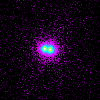 |
Mysterious "Twofaced" Star Explained, Scientists Say [25 September 2001] - There's a simple reason why a curious neutron star in the M15 globular star cluster has shown two faces over the years, beaming an X-ray portrait as perplexing as Mona Lisa's smile. The reason: That's not one star system, but two. |
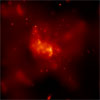 |
Chandra Catches Milky Way Monster Snacking [10 September 2001] - For the first time astronomers have detected material being consumed by the supermassive black hole in our own backyard. A violent, rapid X-ray flare, captured by NASA's Chandra X-ray Observatory, has been observed from the direction of the supermassive black hole that resides at the center of our Milky Way Galaxy. |
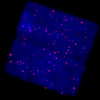 |
Astronomers Go Behind the Milky Way to Solve X-ray Mystery [10 August 2001] - Astronomers using the Chandra X-ray Observatory have peered behind the Milky Way galaxy for the first time, through layers of dust and gas that stretch out for 30,000 light years. They discovered 36 bright, distant galaxies lurking back there, and they found that the source of the Milky Way's X-ray emission is hot, diffuse gas. |
 |
Chandra Detects Halo of Hot Gas Around Milky Way-Like Galaxy [1 August 2001] - The first unambiguous evidence for a giant halo of hot gas around a nearby, spiral galaxy much like our own Milky Way was found by astronomers using NASA's Chandra X-ray Observatory. This discovery may lead to a better understanding of our own Galaxy, as well the structure and evolution of galaxies in general. |
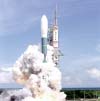 |
MAP Launches Successfully [3 July 2001] - The MAP satellite is off and running on its journey to the beginning of time. NASA's Microwave Anisotropy Probe launched successfully on Saturday, June 30, at 3:46 p.m. EDT from Cape Canaveral aboard a Delta II rocket. The satellite will study the first light of the Universe -- the afterglow of the Big Bang -- from an era long before the first stars and galaxies appeared. |
 |
New Type of Black Hole May Turn Starburst Galaxies Inside Out [5 June 2001] - Starburst galaxies -- those distant gems set aglow in a colorful lifecycle of star birth, death and renewal -- may be the stepping stone to a far brighter phenomenon: a quasar-type galaxy with a supermassive black hole at its core. |
 |
Black Holes May Take Space For A Spin [30 April 2001] - As if black holes weren't menacing enough, astronomers now have observational evidence that at least some of them spin about like whirlpools, wrapping up the fabric of space with them. |
 |
The Grand ASCA Mission [20 March 2001] - What goes up, must come down. ASCA, a workhorse of an X-ray observatory that provided astronomers their first real glimpse of black holes, is no exception. |
 |
Deepest X-rays Ever Reveal Universe Teeming With Black Holes [14 March 2001] - For the first time, astronomers believe they have proof black holes of all sizes once ruled the Universe. NASA's Chandra X-ray Observatory provided the deepest X-ray images ever recorded, and those pictures deliver a novel look at the past 12 billion years of black holes. |
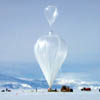 |
Classy Antarctic Balloon Captures the Earliest Light of the Universe [01 March 2001] - TopHat, an innovative hat-shaped astronomy experiment that sits on top of a balloon, circled around the frozen continent at 120,000 feet for nearly two weeks in January, collecting light from the cosmic microwave background radiation. |
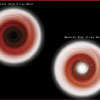 |
Not Seeing is Believing When it Comes to Event Horizon Evidence [01 February 2001] - NASA's two great observatories, the Hubble Space Telescope and the Chandra X-ray Observatory, have independently provided what could be the best direct evidence yet for the existence of an event horizon, the defining feature of a black hole and one of the most bizarre astrophysical concepts in nature. |
 |
Chandra Links Pulsar to Historic Supernova [19 January 2001] - New evidence from NASA's Chandra X-ray Observatory suggests that a known pulsar is the present-day counterpart to a supernova that exploded in 386 AD, a stellar explosion witnessed by Chinese astronomers. If confirmed, this will be only the second known pulsar to be clearly associated with a historic event. |
 |
Students Find Elusive Pulsar [3 January 2001] - Three high school students won first place in the national Siemens-Westinghouse Science and Technology Competition for their discovery of a spinning neutron star, or pulsar. Their unique access to data from NASA's Chandra X-ray Observatory X-ray Observatory allowed them to prove the existence of a pulsar that professionals had not been able to positively identify, despite extensive studies. |
1996 |
1997 |
1998 |
1999 |
2000 |
2001 |
2002 |
2003
2004 | 2005 | 2006 | 2007 | 2008 | 2009 | 2010 | 2011
2012 | 2013 | 2014 | 2015
2004 | 2005 | 2006 | 2007 | 2008 | 2009 | 2010 | 2011
2012 | 2013 | 2014 | 2015
Take Me to the News Page

